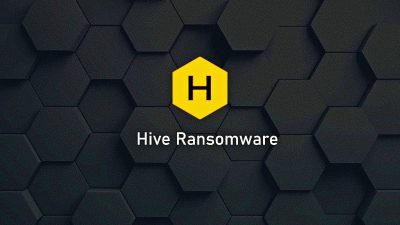A review from SecZetta uncovered 83% of respondents concur that since associations progressively depend on project workers, specialists, and other outsider laborers, their information frameworks have gotten more vulnerable against cyberattacks. These Third-Party data breach is making organizations vulnerable to cyberattacks.
Further, 88% of individuals say associations and government units should have better information security frameworks set up to shield them from the increment in outsider third-party data breach assaults. Of specific note, 53% of respondents need trust in the strength of the U.S. government’s framework to shield American individuals from cyberattacks.
Ongoing high-profile data leaks, including SolarWinds, Colonial Pipeline, and JBS Foods, have uncovered how weak associations are to cybercrime and specifically ransomware assaults. Of note with ongoing third-party data breach assaults is what information leaks can rapidly mean for parts of regular daily existence, for example, the capacity to fill a vehicle with fuel or purchase meat at the supermarket. To modify buyer trust, overview respondents say associations should put resources into cutting-edge innovation frameworks that help proactively decrease their danger of outsider executed cyberattacks.
“The surge in high-profile cyberattacks in recent months has shown how seemingly easy it is for bad actors — whether human or bots — to infiltrate an organization’s data security infrastructure, creating chaos for the company and potential harm for consumers,” said David Pignolet, CEO of
“A large number of these assaults started through shortcomings in these associations’ danger-based character access and lifecycle systems for non-worker populaces.”
Protecting an association from cybercrime has gotten limitlessly more troublesome given how digitized, and correspondingly interconnected, the world has become.
As indicated by late information from the Ponemon Institute, 51% of leaks are brought about by a third-party data breach, and the greater part of respondents concede their associations are not assessing the security and protection practices of these outsider non-workers prior to allowing them admittance to classified and sensitive data and frameworks.
Also read,
Individuals accept dependence on outsider specialists builds the danger of cyberattacks
- 83% of individuals refer to expanded dependence on outsider specialists as an impetus for flood in information leaks
- 88% of respondents concur associations should have a framework set up to assist with alleviating the danger of outsider-related cyberattacks, with 54% emphatically concurring
Client trust changes relying upon the business
Overview results show individuals trust a few enterprises are greater at relieving cyberattacks than others, however, none are doing especially well. At the point when asked how sure they are in coming up next ventures’ foundation to secure against cyberattacks:
- 53% of individuals need certainty that the U.S. government has the best foundation set up to shield Americans from cyberattacks. Those in the Northeast are bound to say they’re positive about the public authority’s capacity to foil cyberattacks than those in the South, Midwest or West
- Individuals are least positive about the oil, gas, and utility businesses, with just 45% saying they feel certain. Men were somewhat bound to say they were sure than ladies (48% versus 43%)
- 56% of respondents express certainty that the medical services as well as health care coverage ventures have the fitting framework set up to shield them from the effects of cyberattacks
- 52% of individuals feel positive about purchaser confronting ventures (i.e., monetary administrations, retail) with men being somewhat more sure than ladies (55% versus 48%)
Individuals need trust in associations’ capacity to forestall cyberattacks
- 78% of individuals trust it’s simple for cybercriminals to penetrate an association
- 73% of individuals accept most associations today need great powers over who approaches their PC frameworks and additionally information. Of this gathering, those 55 years and more established were bound to concur with this assertion
- 54% of individuals express concern they and additionally, a relative will be straightforwardly affected by a cyberattack on an association with which they work together. Of this gathering, those 30 years and more seasoned are bound to be concerned, while men are somewhat more worried than ladies (57% versus 51%)
Individual monetary misfortune is of most profound worry to individuals
- At the point when requested which regions from their own lives they feel are generally vulnerable against a cyberattack, 42% of respondents referred to the potential for individual monetary effect from a cyberattack on an association with which they have a relationship. Of this gathering, those matured 30 and more seasoned are more worried about encountering monetary misfortune, probably due to having more resources to lose
- 24% are generally worried about the effect of disturbances to utilities and other important ventures.
- 14% are stressed over disturbances to the U.S. food supply
“The aftereffects of the review obviously show elevated attention to cybercrime across the overall population who distinguish expanded dependence on outsider laborers as the main source of the flood in information leaks,” said Pignolet.
“Given that numerous endeavor associations give admittance to fundamentally more outsider specialists, including their stockpile chains than full-time workers, it’s basically they embrace far-reaching outsider character hazard the executive’s answers for secure themselves and their resources, yet protect clients from monetary misfortune, the openness of actually recognizable data, and the downstream impacts of disturbance to our nation’s foundation. This incorporates the food inventory network, utilities, and surprisingly our public safety.”
Such a large number of associations need computerized and powerful strategies to midway track and deal with their associations with the blossoming number of outsiders with whom they work together. This, combined with the absence of data associations host about these third gatherings, makes them a cybercriminal’s closest companion. The new Presidential Executive Order (EO) commands the central government to “work on its endeavors to distinguish, hinder, ensure against, recognize, and react to these activities and entertainers.”
For associations hoping to make changes to their outsider personality hazard safety efforts, there are steps they can execute today including: appropriately recognizing who every outsider is and the delicate information to which they approach; directing customary client reviews to guarantee outsiders approach dependent on the minimal measure of advantage important to manage their responsibilities; stretching out zero trust projects to outsider non-representative; and leading nonstop danger appraisals of the people working inside an outsider merchant or accomplice, not simply the association in general.
As cyberattacks on associations and government elements keep on filling in size and effect, so too will individuals’ worries about the effect these breaks can have on their day-by-day lives. It’s time associations and the public authority make a move before they’re influenced by the hard and delicate expenses of reputational harm.





